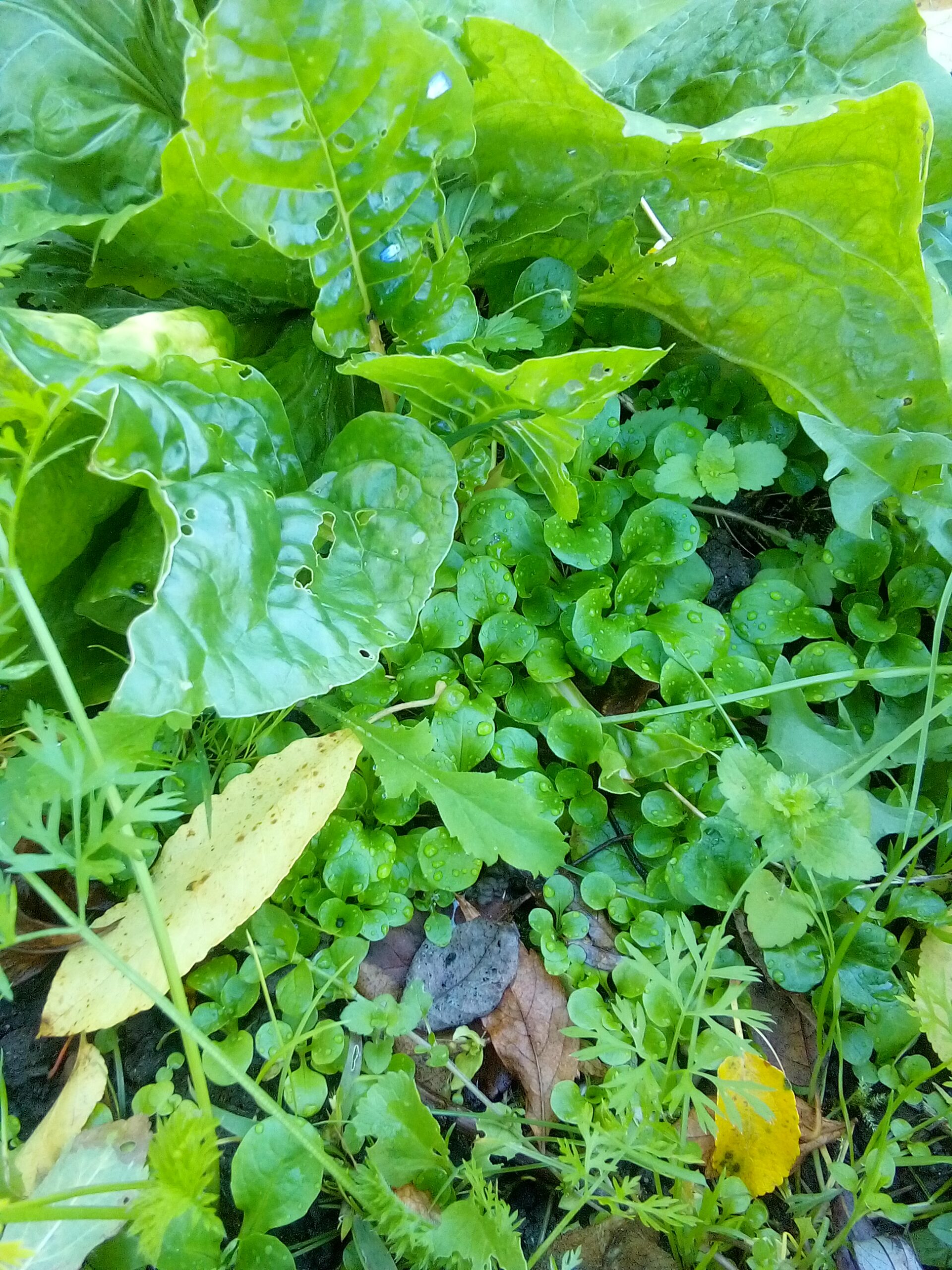Why choose open-pollinated seeds? For me, the answer began with a small patch of field salad that I planted seven years ago. Since then, it has quietly reseeded itself between carrots, fennel, and chicories—proving that open-pollinated varieties remember the place they belong.
Now, every autumn, that same open-pollinated field salad returns stronger, more resilient, and perfectly tuned to my garden’s rhythm.
I still remember that first autumn: damp soil, the scent of fennel and fading calendula, and a small packet of Feldsalat seeds I tucked between the carrots and chicories. Just a handful of seeds. Nothing fancy.
Now, seven winters later, it is still here—the same open-pollinated field salad, weaving itself between fennel stalks and wild rocket, germinating in quiet corners I never planned. It does not grow in neat rows anymore. It simply belongs.
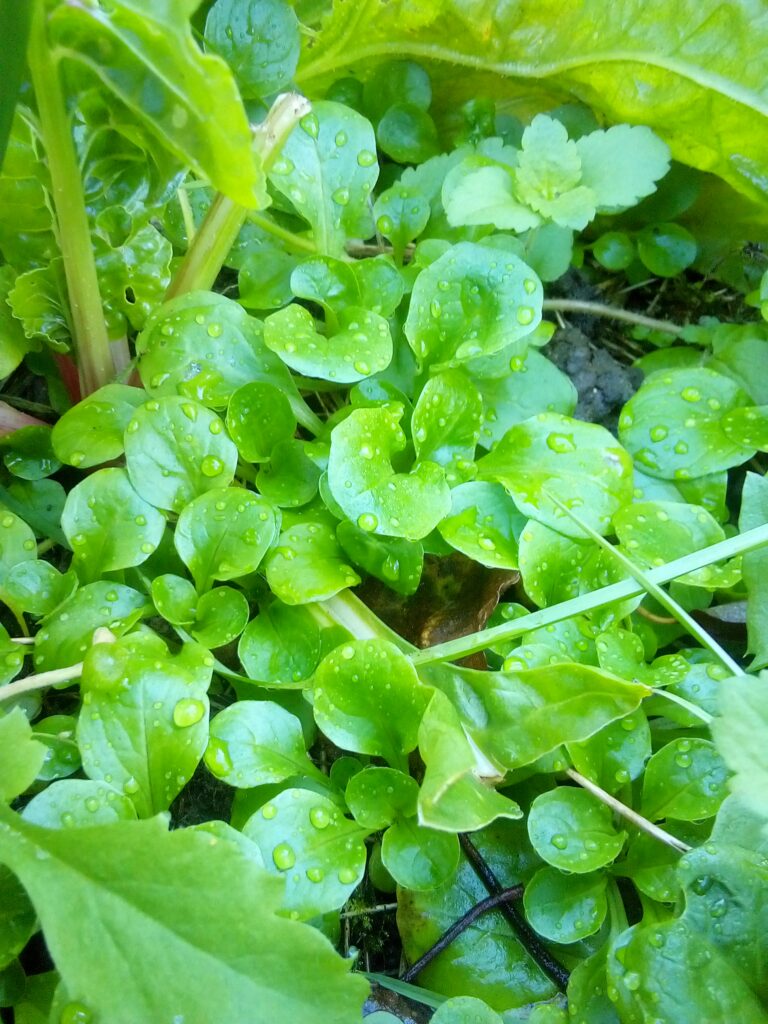
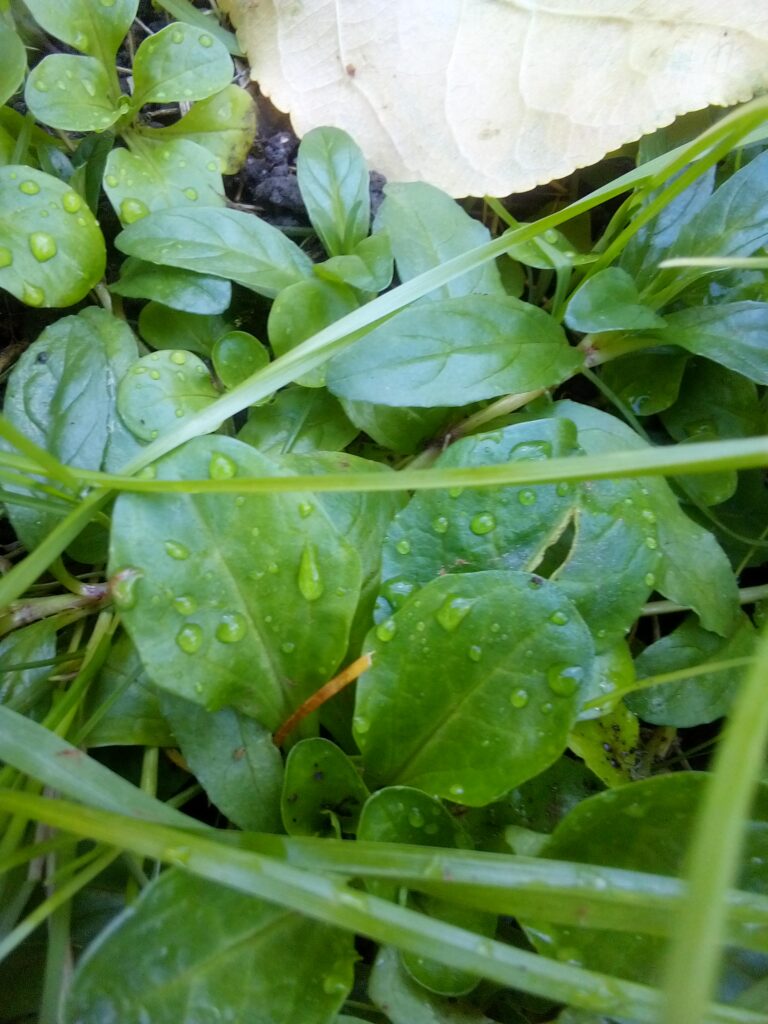

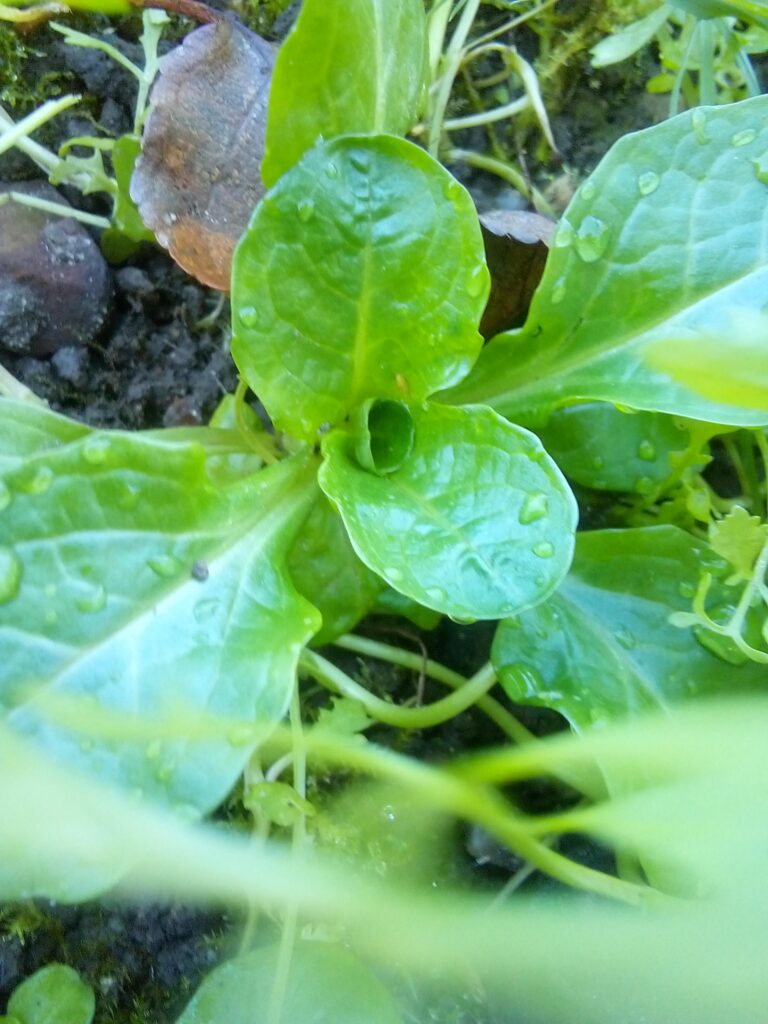
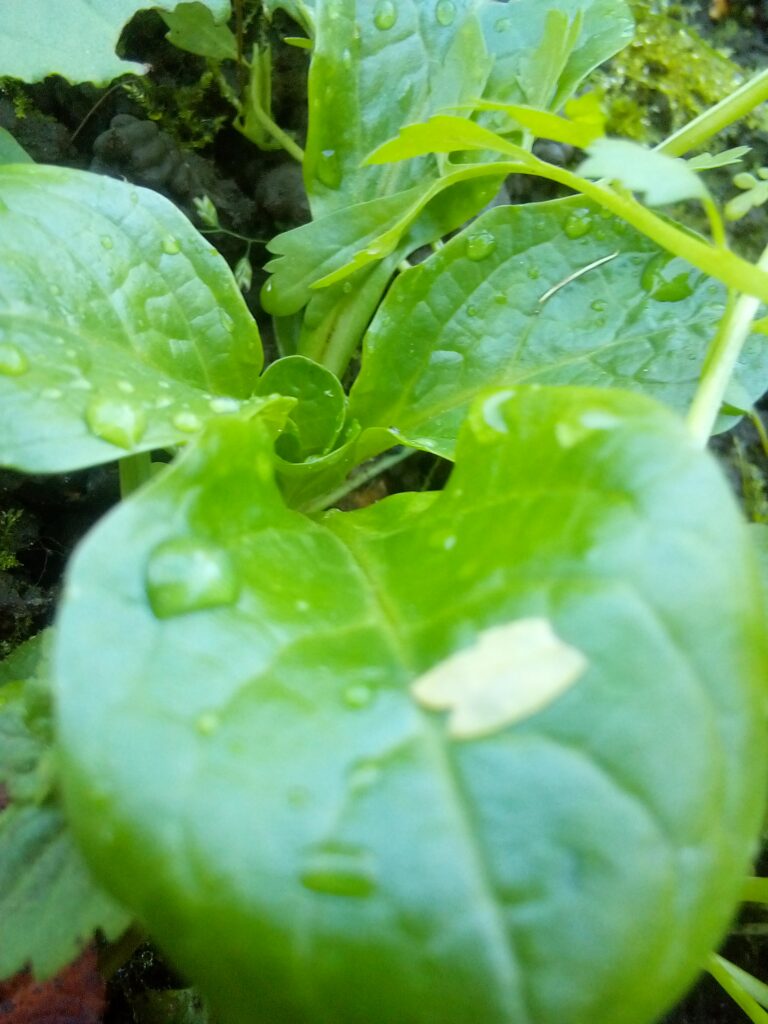
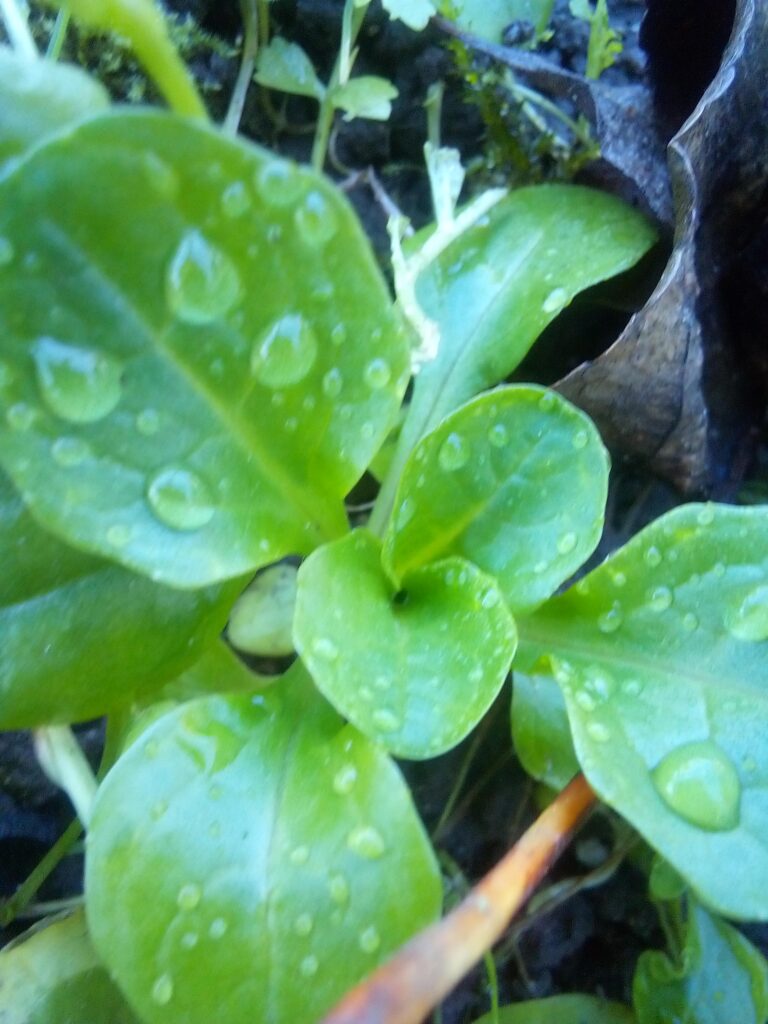
Frida would smile and say, “That’s what happens when you let nature keep the memory.”
That is exactly why I choose open-pollinated seeds, not the uniform hybrids that forget where they have been, but the old, resilient kinds that learn. They adapt to the rhythm of your soil, your rain, your seasons. Each year, the plants that thrive leave behind the strongest seed—seed that remembers this place.
Why Choose Open-Pollinated Seeds for a Living Garden
Open-pollinated seeds are pollinated naturally and produce true-to-type plants that adapt to your soil and climate. Unlike hybrids, they can be saved, shared, and allowed to reseed year after year.
The Story of My Self-Seeding Field Salad
This open-pollinated field salad has taught me more about resilience than any manual. It thrives beside carrots, fennel, and rocket—never uniform, but always belonging.
It is messy, yes, but it is alive. The open-pollinated field salad in Germany has adapted to cold, wet winters and warm, early springs. Every season it returns, teaching me about resilience, timing, and trust.



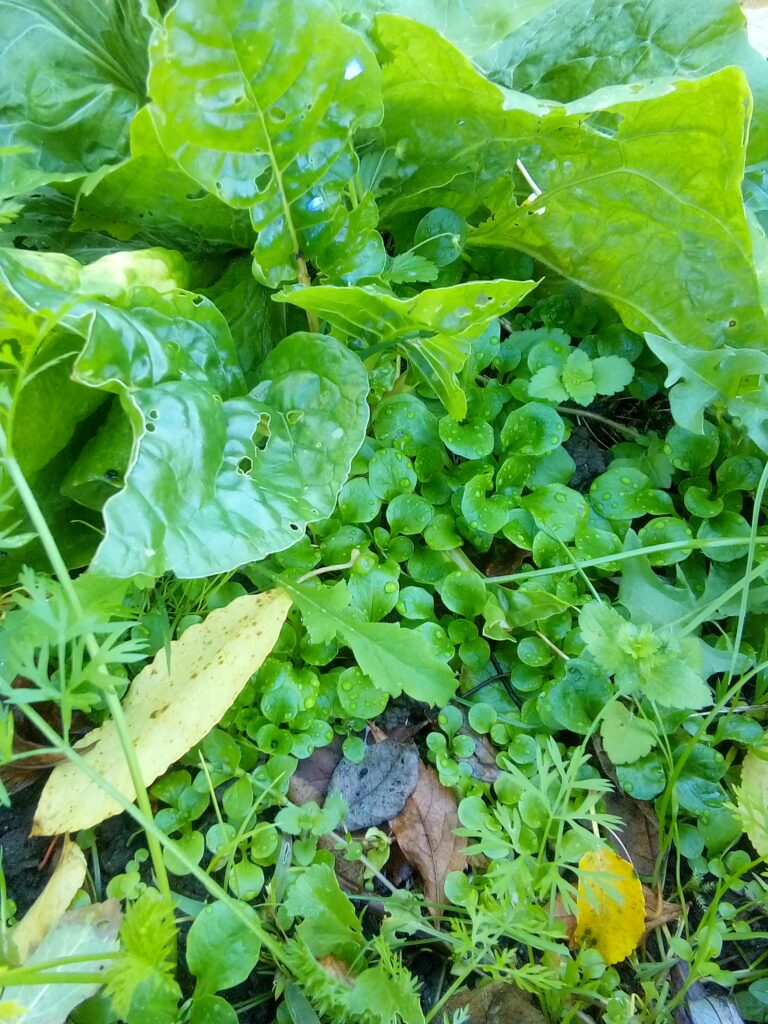
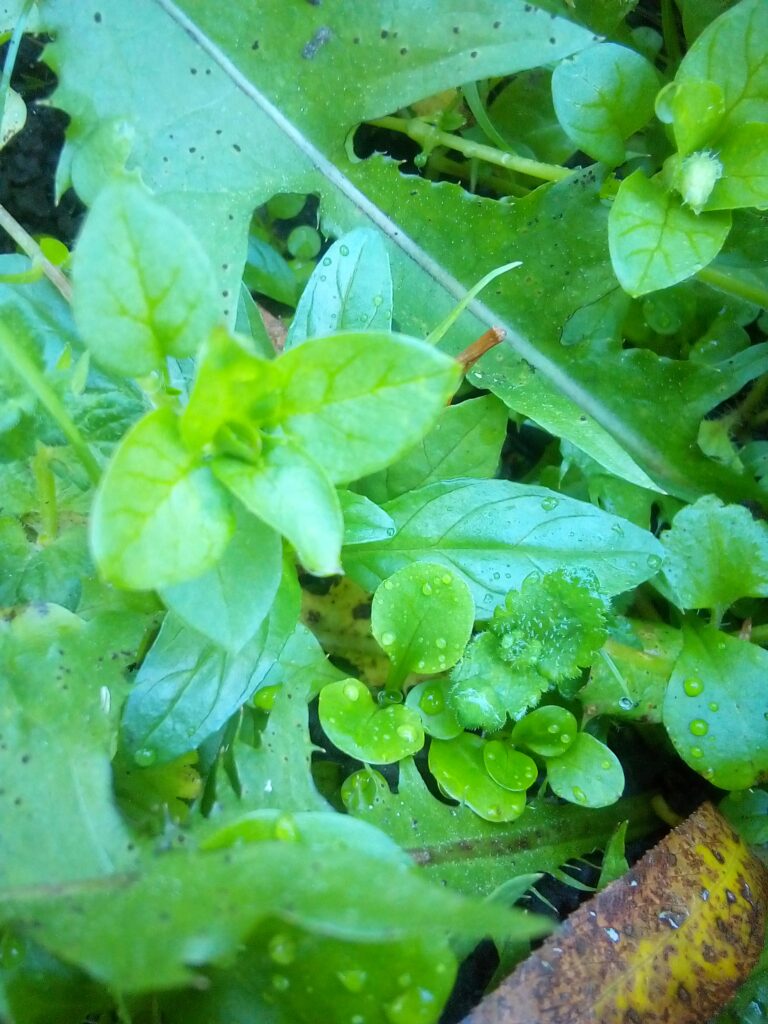
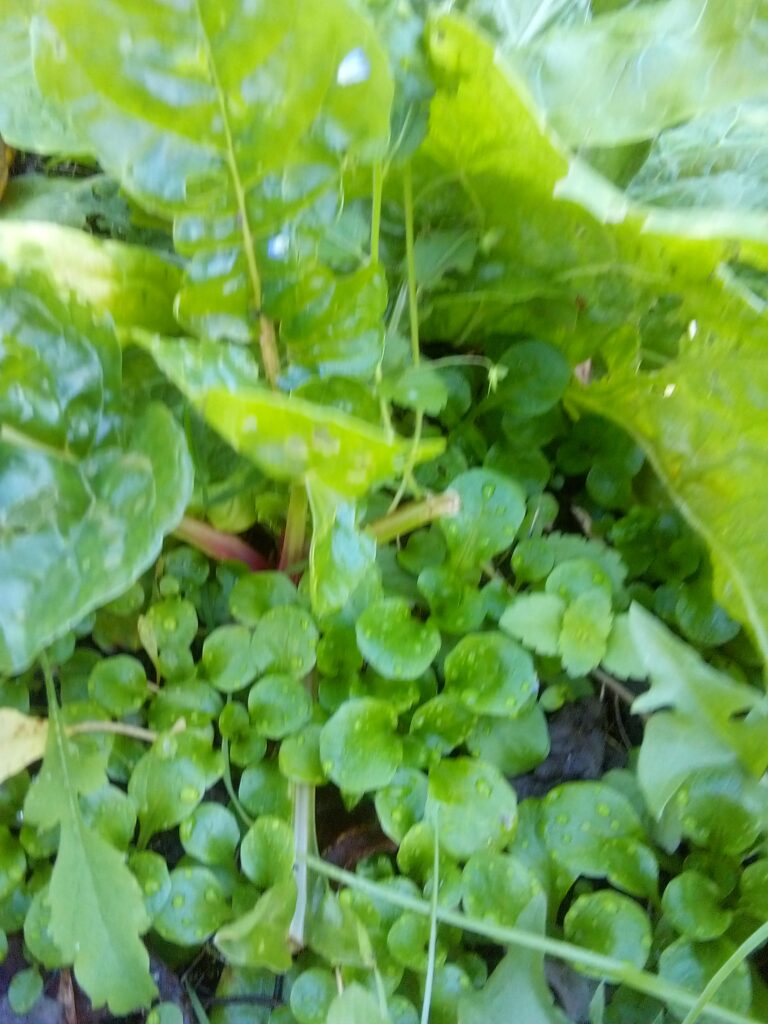
Seed Sovereignty and Why Open-Pollinated Seeds Matter
- Choosing open-pollinated seeds supports seed sovereignty and biodiversity.
- Each plant that thrives leaves behind seed adapted to your local ecosystem.
In my short video, you can see my open-pollinated lamb’s lettuce growing between winter crops — deep red radicchio, pale chicories, and the July-sown carrots that now weave quietly through the bed.
Heirloom Lamb’s Lettuce and Seed Sovereignty
Choosing heirloom lamb’s lettuce and other open-pollinated, self-seeding vegetables is not about nostalgia. It’s about resilience — about understanding why choosing open-pollinated seeds matters. These are plants that belong to the land, not to a barcode. My field salad — known to many as lamb’s lettuce — no longer needs my hand to thrive. It just returns, year after year, proving that nature remembers.
This is the heart of seed sovereignty: letting your garden evolve with you: a real beautiful companion garden.
Frida once said, “You don’t own the garden. You belong to it.”
And maybe that is what open-pollinated seeds are truly about—remembering where we come from, and learning to stay rooted there.
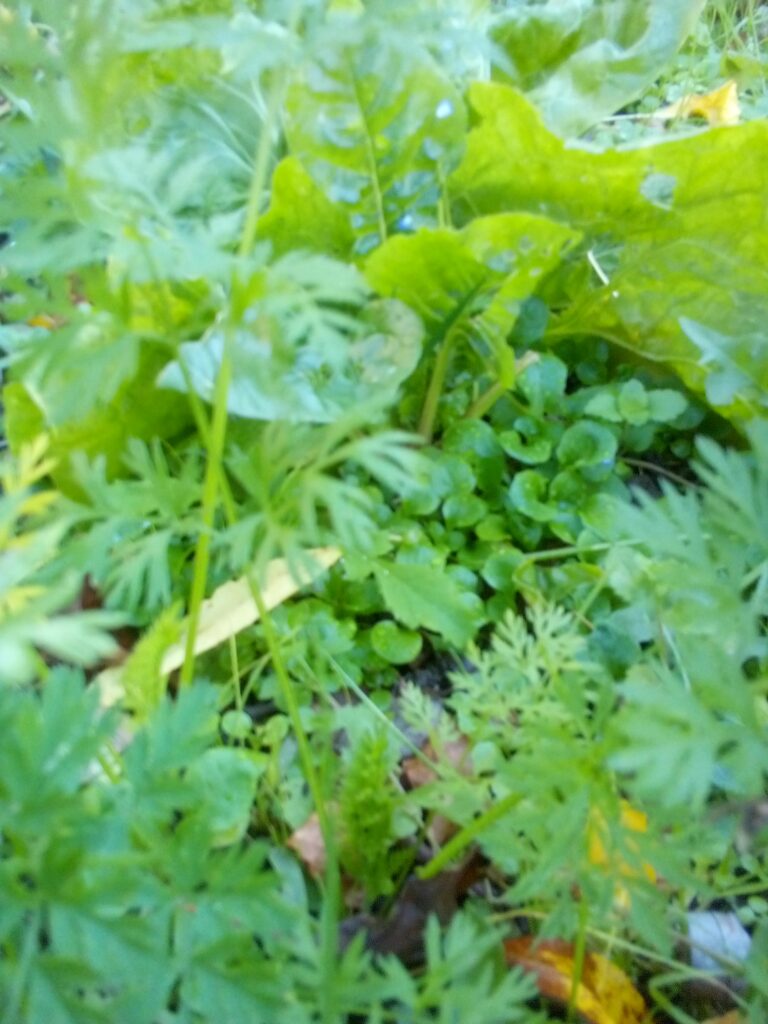
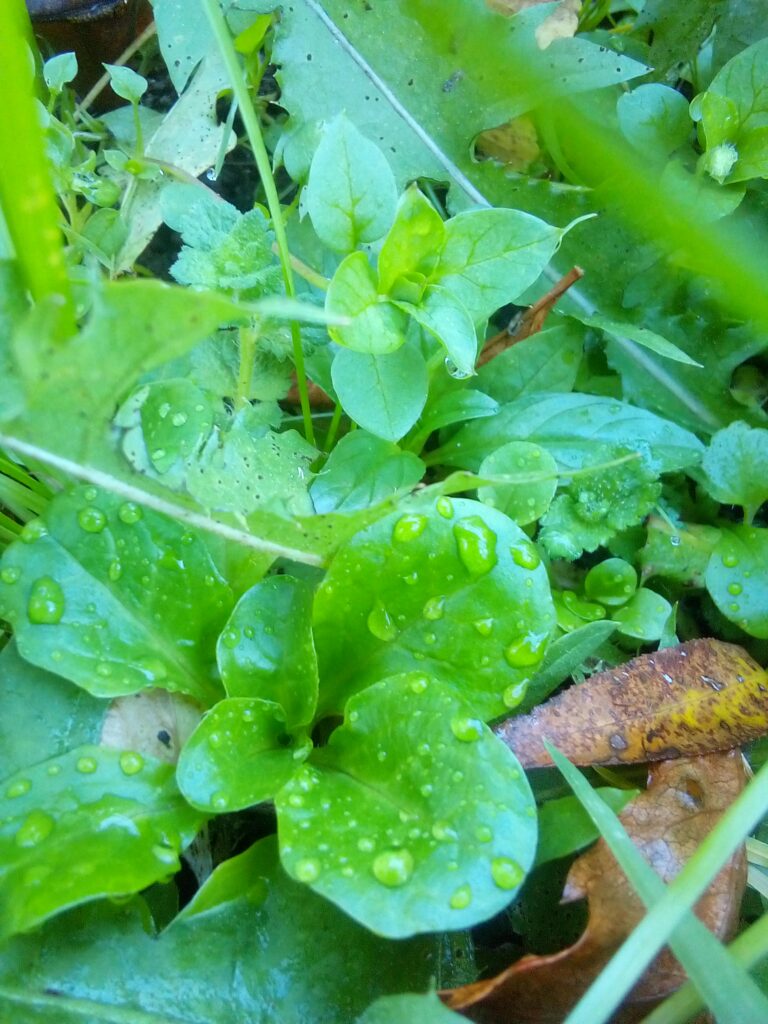
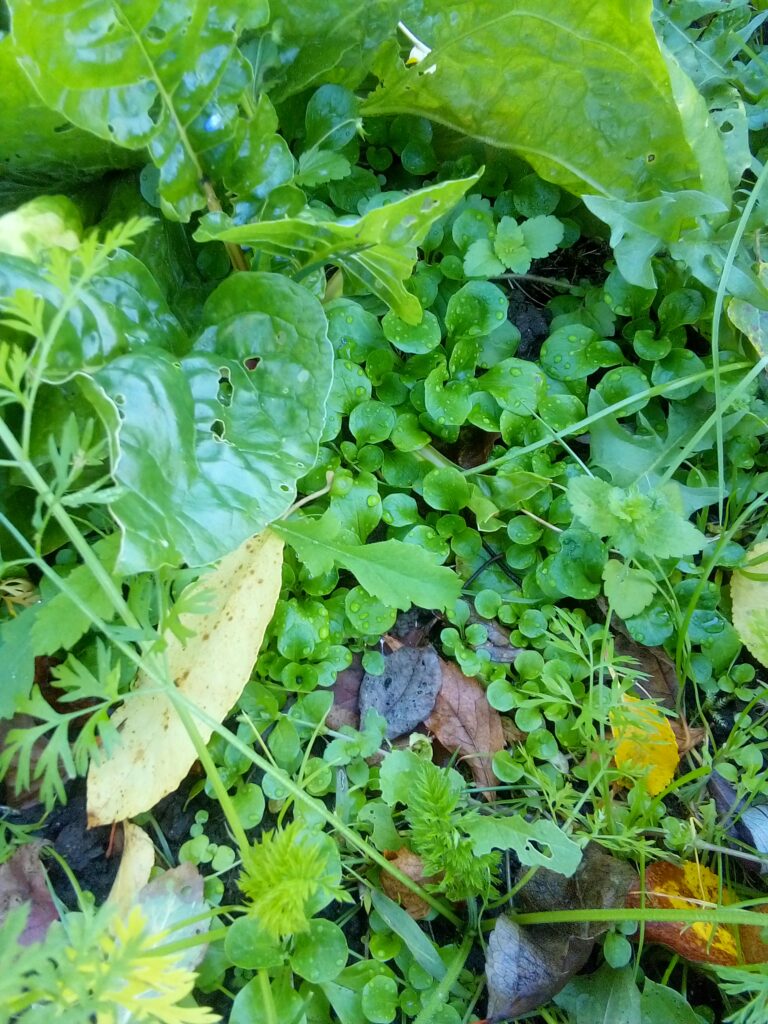

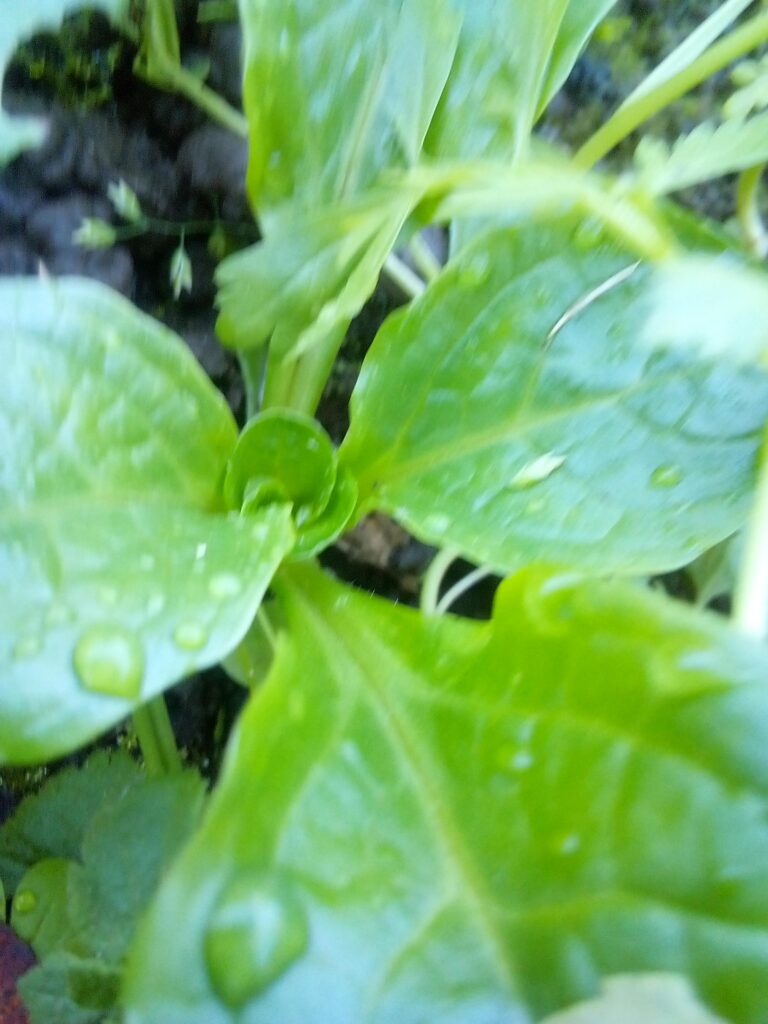
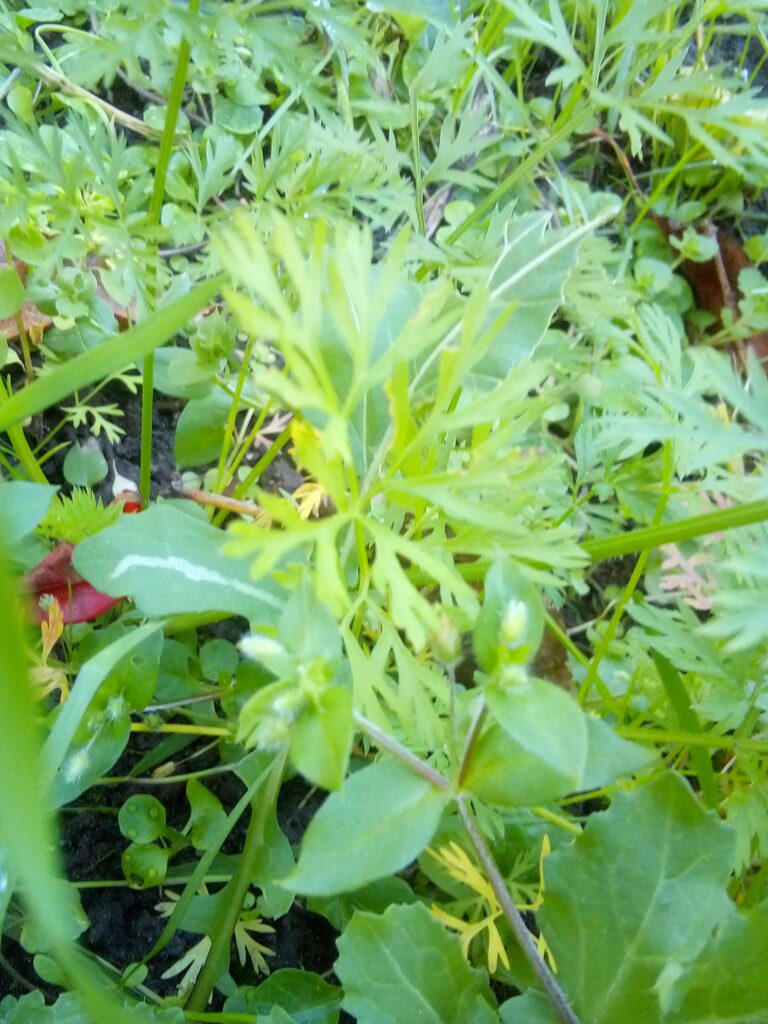
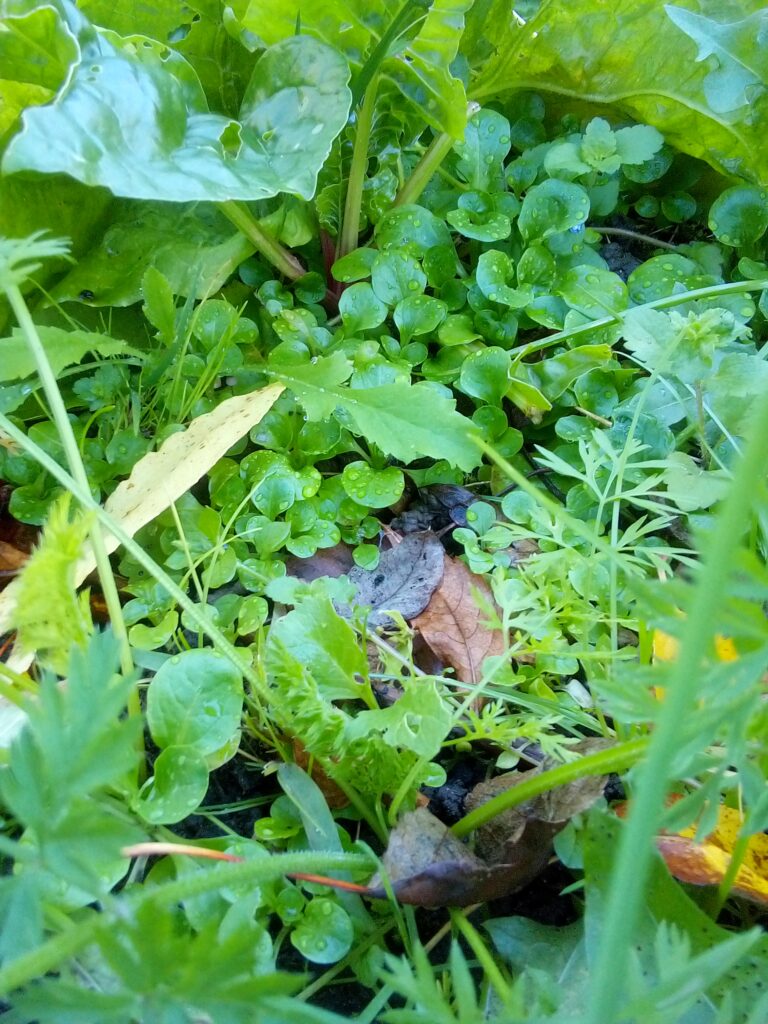
Where to Find Open-Pollinated Field Salad Seeds
If you’re wondering why choose open-pollinated seeds and where to find open-pollinated field salad seeds like the ones in my garden, start with trusted organic sources. I recommend small seed companies that specialize in heirloom and open-pollinated varieties adapted to local climates. You can also find a selection of open-pollinated Feldsalat seeds on Amazon — perfect if you want to explore why choosing open-pollinated seeds helps you grow stronger, self-seeding greens this season. Shop open-pollinated field salad seeds on Amazon.de or on Amazon.com. If you’d like to understand why open-pollinated seeds matter so deeply, read my full story: Why Choose Open-Pollinated Seeds | The Story of My Self-Seeding Field Salad
It’s not just about saving seeds — it’s about saving memory, diversity, and rhythm. The kind that only a living garden can teach.
What are open-pollinated seeds, and why choose them for field salad?
Open-pollinated seeds are naturally pollinated and produce plants true to type. They let you save seed each year and help your crops adapt to local soil and climate. Over time, your field salad becomes stronger, more resilient, and perfectly in tune with your garden.
How can I encourage my lamb’s lettuce to self-seed year after year?
Let a few plants flower and set seed at the end of the season, then leave the soil undisturbed so the seeds can settle and germinate naturally. Avoid digging that spot in winter. Over time, you’ll create a self-sustaining patch of field salad that returns each year, perfectly adapted to your garden.
What’s the difference between heirloom, open-pollinated, and hybrid seeds?
Heirloom seeds are traditional, open-pollinated varieties passed down through generations. Open-pollinated seeds reproduce true to type and can be saved year after year. Hybrids, created by crossing two parent plants, often lose their traits in the next generation. For self-seeding greens like field salad, open-pollinated or heirloom seeds are best — they adapt, reseed naturally, and stay true to your garden’s conditions.
Will letting my salad greens self-seed make my garden look messy, or will volunteers take over?
Self-seeding plants rarely grow in neat rows — they follow their own rhythm. My field salad weaves between carrots and chicories; it’s not uniform, but it belongs. If you accept a touch of wildness, you’ll get a more natural, resilient garden with less work. Thin or move the volunteers if needed, but don’t chase perfect order.
What if I can’t find lamb’s lettuce (mâche) seeds where I live?
In some regions — especially in the U.S. — lamb’s lettuce seeds can be hard to find or have limited shipping options. If that’s the case, you can still explore why choosing open-pollinated seeds matters by trying other cold-hardy, open-pollinated leafy greens.
A great alternative is the Sereniseed Certified Organic Leafy Greens Lettuce Seeds Collection (10-Pack) on Amazon. It includes open-pollinated, non-GMO varieties such as Winter Density, Lacinato Kale, Butterflay Spinach, and Rainbow Chard — all suitable for winter growing and perfect for experimenting with self-seeding, resilient greens. Look for certified organic, open-pollinated seeds whenever possible — they’ll give you the same adaptability and strength that make lamb’s lettuce so rewarding to grow. Get more information on Amazon.
Want to Learn More?
If you’re just beginning your journey with open-pollinated seeds, self-seeding greens, or mindful gardening, I’ve put together a practical starter resource to help you grow with confidence. From choosing the right seeds to understanding soil, light, and rhythm — it’s all in my Beginner’s Guide to Gardening.
Read the full guide here: Beginner’s Guide to Gardening | Healing Harvest Log
Because growing your own food isn’t just about plants — it’s about learning to listen, observe, and remember. And that’s exactly what open-pollinated seeds do best.

